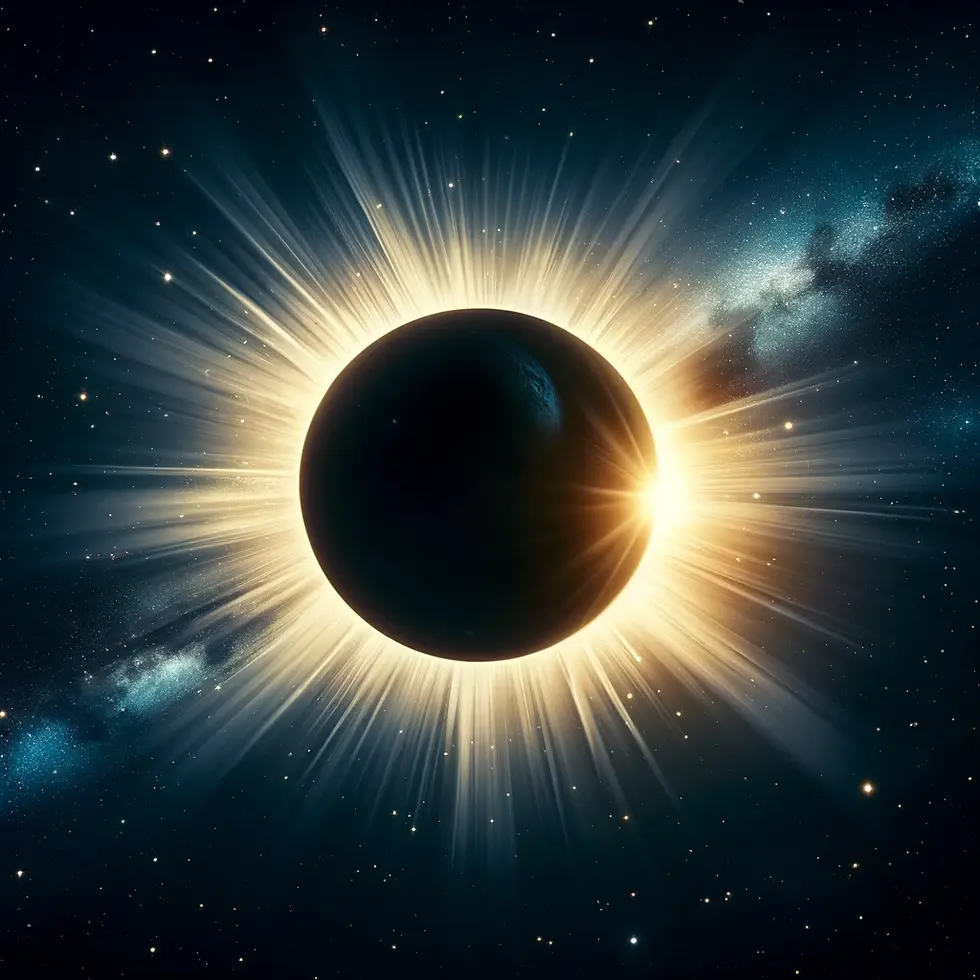Upcoming Solar Eclipse: A Spectacular Sight Awaits
- ehabosawah
- Apr 3, 2024
- 3 min read

Next Solar Eclipse Date Revealed! Get ready to mark your calendars – the next grand total solar eclipse will grace North America on April 8, 2024. Don't miss out on this awe-inspiring celestial event!
Caption: "Eclipse Phases Explained: From the initial partial coverage to the breathtaking totality and back, learn how to safely enjoy each phase of the solar eclipse."
The Solar Eclipse Experience: What You'll Witness
The Journey from Day to Night and Back A solar eclipse unfolds as the moon makes its passage across the sun, showcasing phases from partial coverage to the spellbinding moment of totality.
Initial Phase: Gearing Up with Solar Filters As the moon begins its celestial dance, we enter the partial eclipse phase. Even at this early stage, it's crucial to protect your eyes with special solar filters or eclipse glasses—regular sunglasses won't cut it.
The Peak Moment: Totality Awaits The apex of the eclipse, known as totality, presents a short-lived yet unforgettable spectacle. As the moon entirely cloaks the sun, daylight dims into a surreal twilight. Witness the solar corona’s ethereal glow without the need for eye protection, but be ready to gear up again as the light reemerges.
Concluding Phase: The Return of Partial Coverage Following totality, the moon gradually reveals the sun once more, returning us to a partial eclipse. Keeping your solar filters on is essential until the celestial event concludes.
Eye Safety During the Eclipse: Essential Tips
Protecting your eyes is paramount when witnessing this natural phenomenon. Directly observing the sun without proper protection can lead to serious eye damage or vision loss. Here are the best ways to safely watch the eclipse:
Eclipse Glasses with Certified Solar Filters
Ordinary sunglasses, even the darkest kinds, cannot protect your eyes from the sun's harmful rays during an eclipse.
Invest in eclipse glasses or hand-held solar viewers equipped with ISO 12312-2 certified solar filters to shield your vision.
Verify the safety and authenticity of your eclipse glasses with resources from the American Astronomical Society.
Indirect Viewing Through a Pinhole Viewer
An indirect, yet fascinating, method to view the eclipse is through a pinhole projector. This device projects the sun's image onto another surface, allowing you to safely watch the eclipse's progress.
Discover how to craft your own pinhole viewer or find one online for a unique eclipse experience.
Live Stream the Eclipse
For those unable to witness the eclipse directly or situated outside the path of totality, streaming the event live is a fantastic alternative.
NASA and other organizations will provide live coverage, offering a safe and comprehensive viewing option.
Best Places to Experience the Full Eclipse To witness the eclipse in its total glory, positioning yourself along the path of totality is key. This path will sweep across the continent, offering viewers in certain states an unforgettable sight. Plan ahead to secure the best spot, keeping weather conditions in mind for optimal viewing.
Guarding Your Vision Against the Sun's Rays Direct sunlight, especially during an eclipse, poses a significant risk to your eyes. Only observe the sun through special-purpose solar filters, like those found in eclipse glasses adhering to the ISO 12312-2 standard.
Pre-Eclipse Checklist Before the event, inspect your solar filters for any damage. Follow all instructions and assist children in using solar viewers safely.
Viewing Dos and Don'ts Only during totality is it safe to view the eclipse unfiltered. At all other times, protect your eyes. And remember, never use an unfiltered optical device to view the sun.



Comments